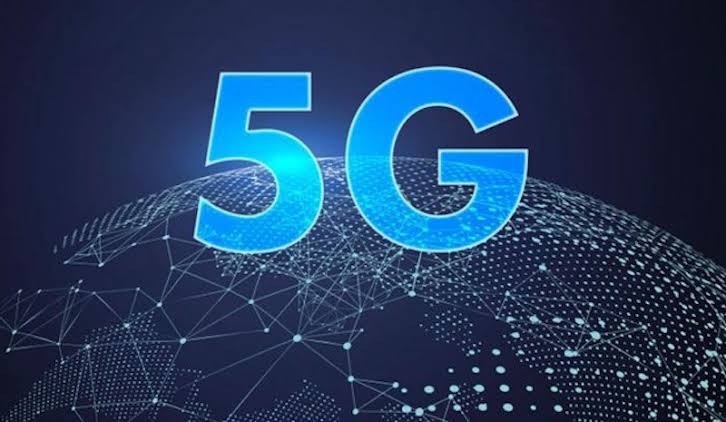Okay, we’ve heard quite a lot about 5G. The article of 6 May 2019 in this column, “Expert advice to governments on effective 5G deployments,” goes into details on spectrum availability and the “touchiness” of 5G because of the high frequencies. I talked about how the millimeter waves – typically associated with the 5G network, are able to carry lots of data, but that the waves are also dissipated more easily by gases in the air, trees, and nearby buildings, when compared to low-frequency waves.
So, while 5G may be “God-sent” for superfast communication speeds in densely packed networks, they are not able to carry data for long distances (due to the attenuation), when compared to lower-frequency networks (1G through 4G).
The electromagnetic spectrum, within which X-Rays, light and visible rays, and the microwaves operate, also includes the (radio) waves for your AM and FM radio, and the millimeter waves. The approximate capacities (data transfer rates) of the various networks are as follows: 1G (2 kilobits per second, or 2 kbps), 2G (64 kbps), 3G (144kbps to 2Mbps), 4G (100Mbps to 1Gbps) and 5G (1Gbps and higher).
Typical frequencies are: 1G (Analog signal, 30 KHZ), 2G (digital signal, 1.8GHz), 3G (digital, 1.6 – 2.0 GHz), 4G (digital, 2 – 8 GHz), and 5G (digital, 3 – 300 GHz).
Practically speaking, typical frequencies of 5G are not easy to state because of the intrinsic instability of the network and hence the need to combine different (low, medium, and high) frequency parts of the radio spectrum for acceptable 5G performance. The holy grail of the 5G technology is the available frequency bands. In the 6 May 2019 article, I pointed out that “the country that wins the 5G race, from the standpoint of technology deployment, is not going to be the most innovative, but the one with the availability and wherewithal to make available to carriers, the correct combination of spectrum (low, medium, high) frequency bands, in a contiguous manner.”
A GSMA white paper suggests that 5G needs spectrum within three key frequency ranges to deliver widespread coverage and support all use cases. (GSMA stands for GSM (Global System for Mobile communication) Association.) The three ranges are: Sub-1 GHz, 1-6 GHz and above 6 GHz. The Sub-1 GHz frequencies will support widespread coverage across urban, suburban, and rural areas and help support Internet of Things (IoT) services. The 1-6 GHz frequencies will offer a good mixture of coverage and capacity benefits, including spectrum within the 3.3-3.8 GHz range, which GSMA expects will form the basis of many initial 5G services. Frequencies above 6 GHz are needed to meet the ultra-high broadband speeds envisioned for 5G.
What does the current global 5G deployment landscape look like today, 17 August 2020? In the US, many carriers (AT&T, Sprint/T-Mobile, U.S. Cellular, Verizon, Mint Mobile, and so on) have deployed 5G capabilities to various degrees. Let’s look at AT&T, as an example. On 23 July 2020, AT&T made the big announcement that its 5G has become available to all its business and private customers as of this date.
Regarding the speed of AT&T’s 5G, it’s quite modest, compared to what is technically possible: 850 MHz for the company’s low-band 5G rollout. The company says this band has a reach of about 2 miles from cell sites and will cover “tens of millions” of consumers and businesses this year. AT&T plans to deliver nationwide sub-6 GHz 5G coverage anytime from now, if it hasn’t already. Whither China in 5G? The carriers China Mobile, China Unicom, and China Telecom, have reportedly already built more than 250,000 5G base stations across China, according to Lu Chuncong, Deputy Director of the Information and Communications Administration of the Ministry of Industry and Information Technology. The projected number of 5G base stations by the end of 2020 is approximately 600,000. The current number of 5G subscribers in China exceeds 36 million. Europe lagged the US by approximately one year in deploying 4G LTE.
However, the continent is more aggressive on 5G. In April of 2019, Switzerland’s Swisscom became the first European carrier to switch on its 5G service, followed by UK’s EE in May 2019. Vodafone is also deploying 5G in UK and beyond. Vodafone Germany reportedly started its 5G network in July 2019, and it wants to reach approximately 10 million people with 5G by the end of 2020. Regarding the rest of the world: In India, 5G networks have not yet been built!
Concerning South America, according to mexicanist.com on 9 March 2020, “there are now five 5G networks in the region, and they are in Uruguay, where it was launched in April 2019, and in Puerto Rico, Trinidad and Tobago, Suriname, and Aruba (the last four were launched last December 2019).”
As for Africa, according to dignited.com on 16 May 2020, “Lesotho and South Africa are the only African countries where 5G is commercially available, although they are extremely limited. In Lesotho, the Central Bank and a mining company are the only entities using 5G so far. In South Africa, Rain (a data provider) is offering 5G to a select group of customers.”
While there may be perhaps millions of 5G phones in Nigeria, to my knowledge, the carriers there have not announced any 5G deployments.

 Join Daily Trust WhatsApp Community For Quick Access To News and Happenings Around You.
Join Daily Trust WhatsApp Community For Quick Access To News and Happenings Around You.


